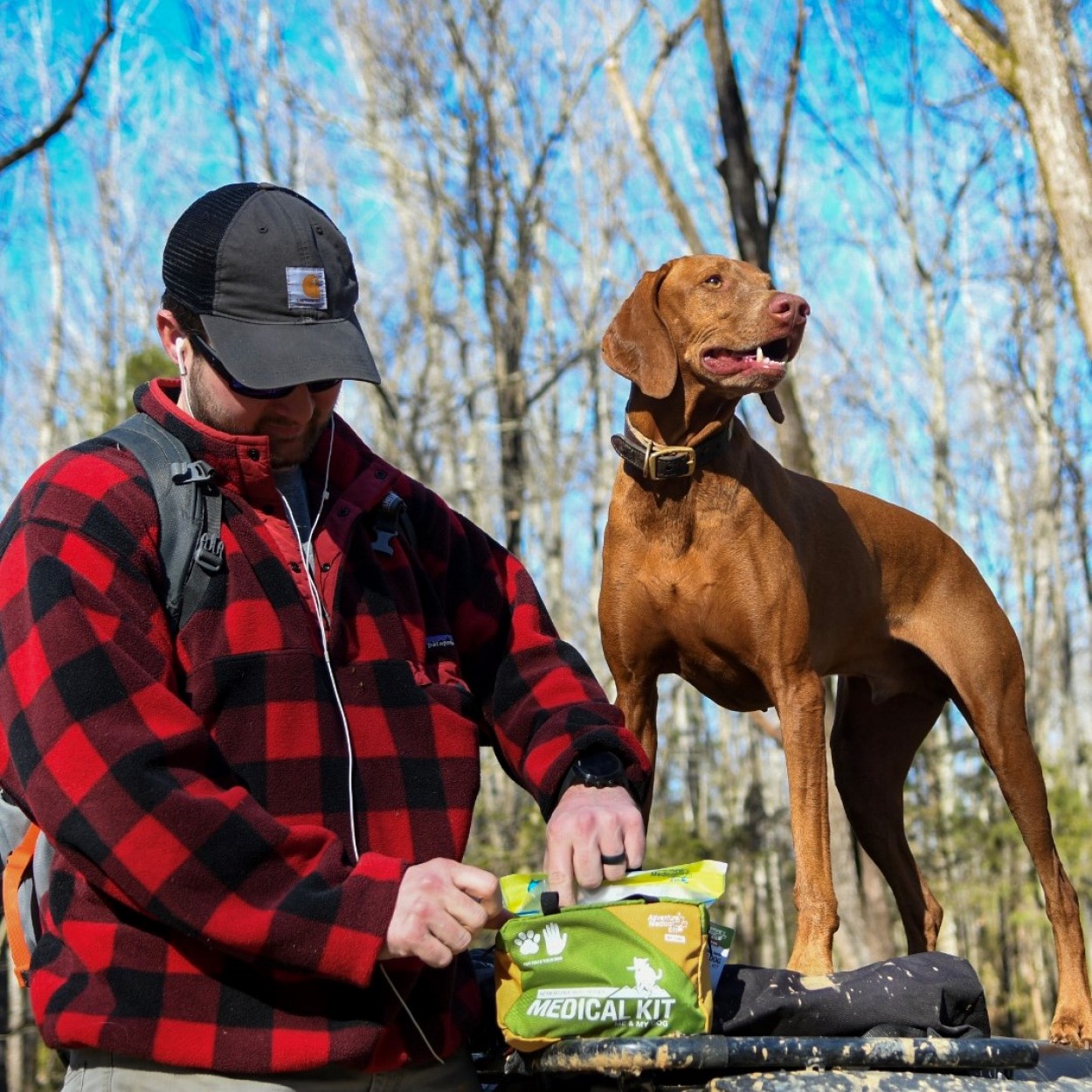A dog can be injured just as surely as you can. Your dog is not necessarily a good judge of what she can and can’t do. Winnie was cautious and trustworthy. Gracie is fearless, and she pays for it sometimes. Scrambling over rocks may be fun for you, but it’s an invitation to an injury if you’re not careful. If your dog does hesitate, this means you should wake up. Dogs can be smarter than you.
The most common injuries are to a dog’s foot pads. They are not thorn-proof and a little thorn can cause a lot of pain. Dog’s feet have a lot of innervations, just like ours. There’s no walking it off.
Whether it’s a thorn or a fishhook, a lot of the first aid for dogs is the same as for you. The big difference is pain management. Dogs do not tolerate human NSAIDS or pain relievers. Your veterinarian can prescribe a few good pain relievers, such as Rimadyl and Tramodol.
Rimadyl is the equivalent of Ibuprofen for adults. It can help with aches and pains and is good thing for your older dog the morning after an overly exuberant climb. Tramadol is a synthetic opiate, so it’s more powerful but can make your dog drowsy. For aches and pains, my vet recommends Rimadyl. For more chronic pain, Tramadol works well. When Alice strained her shoulder we put her on Tramadol for a few days. It helped her stay a little more relaxed so she would heal better.
Then there are other critters, large and small, that can be a threat. Larger mammals such as bears and moose generally avoid humans if we avoid them, but a curious dog can be killed with a moose kick in seconds, especially if there are calves. Porcupines, as previously mentioned, can be nasty. Skunks and raccoons can transmit rabies with just a nip, and skunks have other capabilities that are unnecessary to explain. Small mammals can scratch the nose of a curious dog.
Ticks can be a problem in tick country. We do tick inspection every night, and it might take a little bit of searching, especially with deer ticks, the carriers of Lyme Disease. Wood ticks are easier to find. Treat them as you would with a human. If they’re not embedded yet, it’s easy. I throw them onto the fire grate, where they sometimes make a satisfying pop.
Consider immunizing your dog for Lyme. It’s a controversial subject, but I have done it for years with no ill effects. Your dog, your call.
The big thing to remember when it comes to first aid and your dog is that if your pooch gets hurt when you’re out in the wilderness, you will have to find a way to get her back home. Keep that in mind when you’re planning your trip, thinking about the terrain you’ll be covering and how far out from civilization you’ll be, and calculating whether to take a risky detour.
All this shouldn’t discourage you from taking your canine companion on a wilderness excursion. It just requires more planning and a little more awareness of your dog’s capabilities. In finding that out during your pre-trip planning, you just may end up growing closer to your loyal pooch.
Some of my best wilderness expeditions have been solo trips with a well-behaved dog. Sometimes they’re the perfect companion…they watch, they learn, they love, and they snuggle you at night. They’ll sit and watch the glowing coals of a campfire and fall asleep on your feet. There’s nothing better than that at the end of a long day.
Do you take your dog camping or on other wilderness expeditions? Share your tips for navigating the great outdoors with a pooch at your side!

